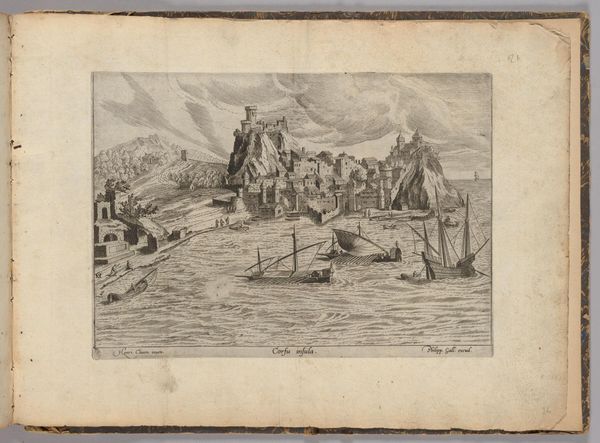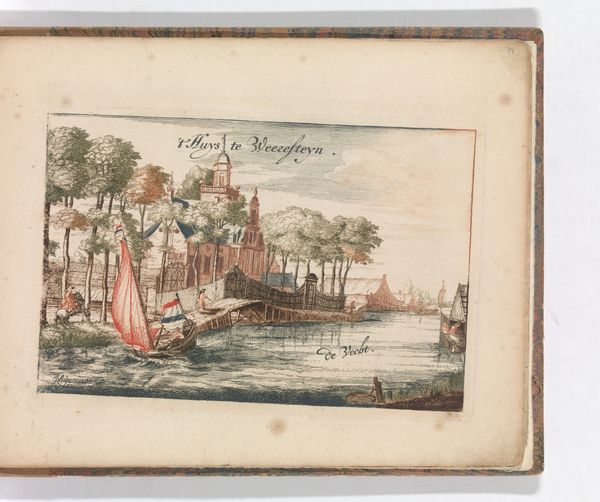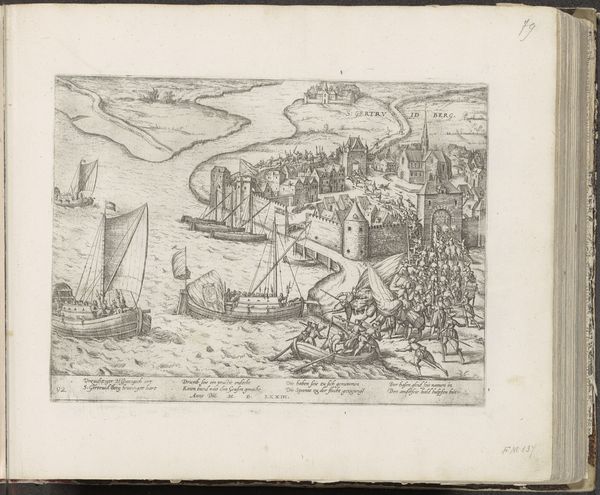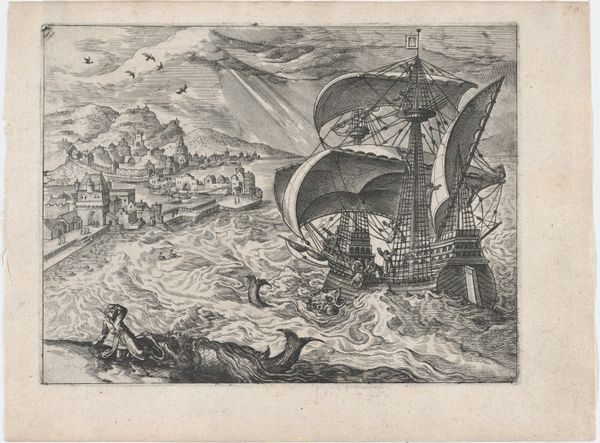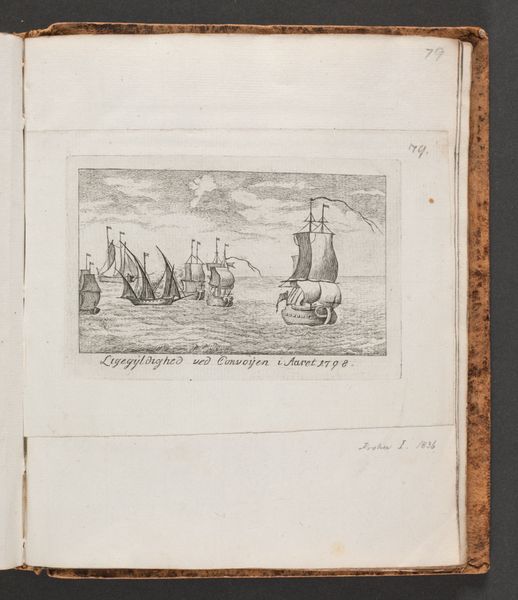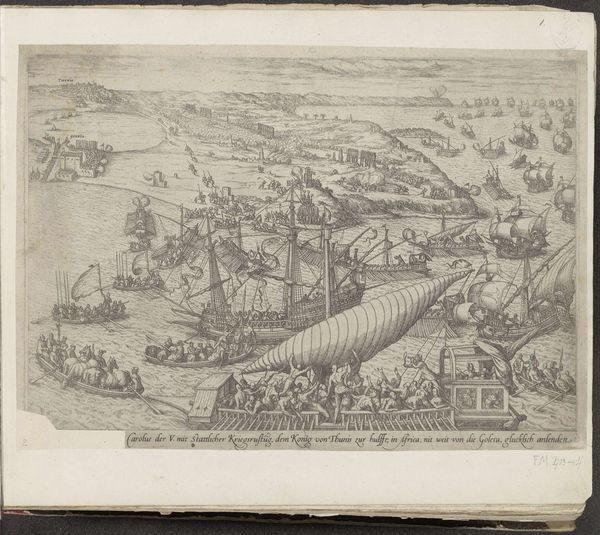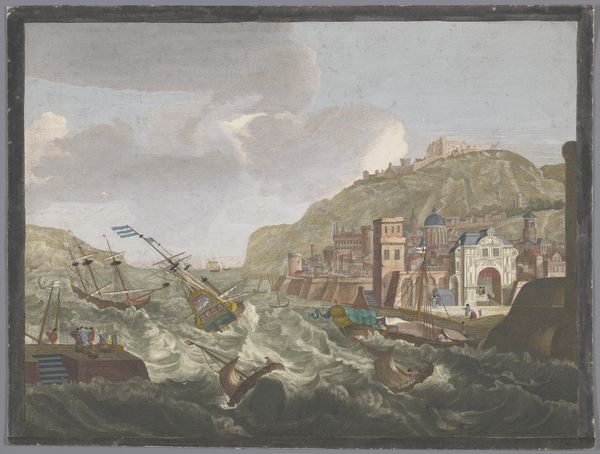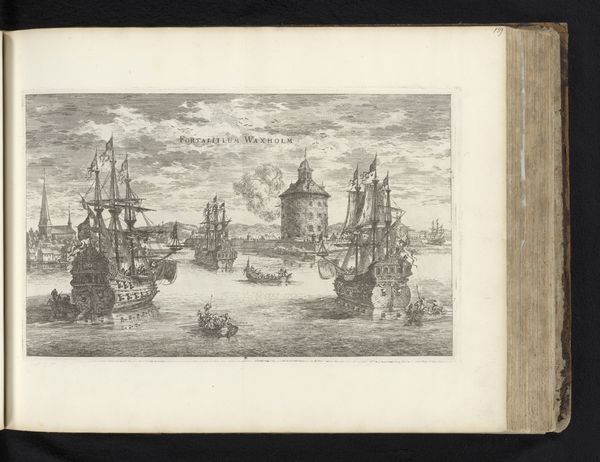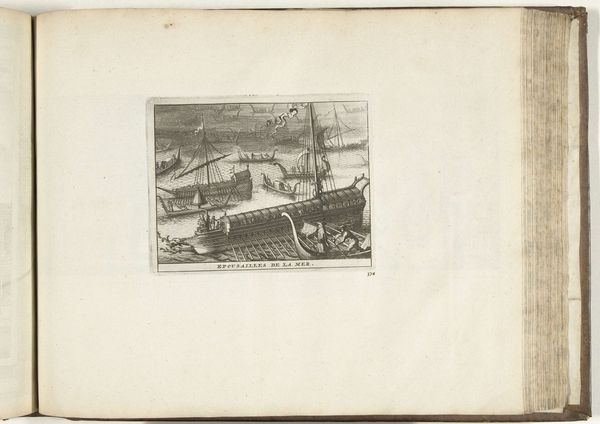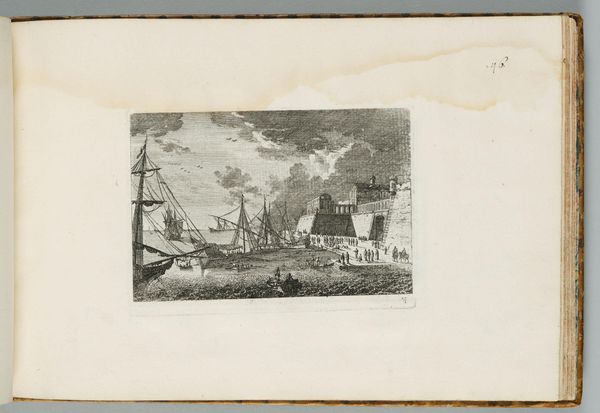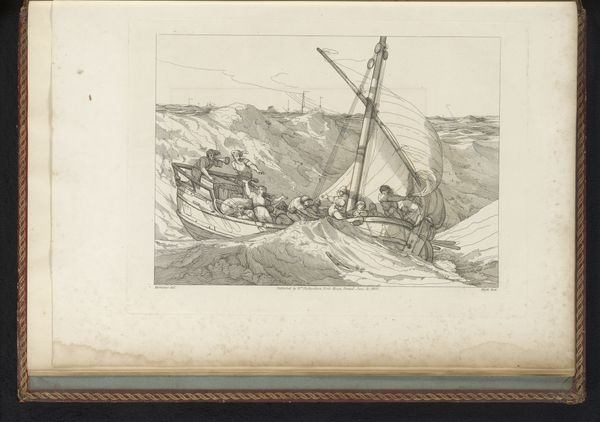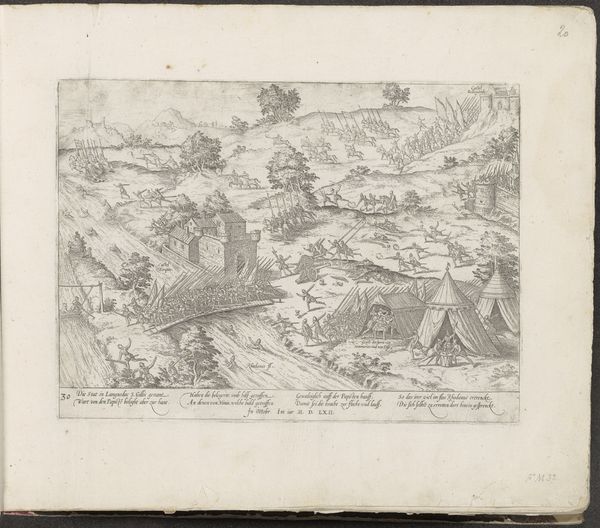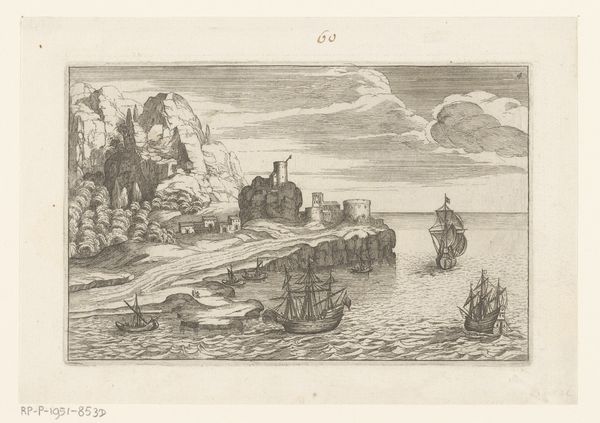
'Schevelinge', in: Tooneel Der Voornaamste Nederlands Huizen, En Lust Hoven, Naar T Leven Afgebeeld 1660 - 1693
0:00
0:00
drawing, print, watercolor
#
drawing
#
boat
#
baroque
# print
#
landscape
#
watercolor
#
horse
#
cityscape
#
genre-painting
#
sea
Dimensions: Plate: 4 3/16 × 6 3/8 in. (10.6 × 16.2 cm)
Copyright: Public Domain
Editor: Here we have 'Schevelinge' by Carel Allard, a print with watercolor from the late 17th century. It’s a coastal scene, and I'm struck by how detailed the depiction of daily life is for what I'm assuming were common people. How would you interpret this work? Curator: For me, this piece speaks volumes about the production and consumption of imagery in the Dutch Golden Age. Look at the way Allard combines printmaking, a relatively mass-producible technique, with hand-applied watercolor. It raises questions about the hierarchy of art forms and the democratization of landscape imagery. What can this tell us about who this image was *for*? Editor: That's fascinating. I hadn’t thought about it in terms of production. Given its inclusion in a book of notable houses, wouldn’t that suggest it was intended for a relatively wealthy audience, maybe as a way to consume views they may have had access to physically? Curator: Precisely. Think about the material realities. The paper, the ink, the labor to produce the print and then add watercolor—these all represent economic value and specific labor processes. Moreover, the *Tooneel* as a published collection suggests a market interested in owning, consuming, and displaying such images. And notice how the scene, at first glance idyllic, also shows evidence of fishing – labor for livelihood! Editor: So it’s not just a pretty picture, it’s about the social and economic systems that made its creation and consumption possible. That's really changed my perspective on what I am seeing. I would not have looked at this in terms of economy and materials otherwise! Curator: Exactly. By focusing on the materiality and means of production, we uncover deeper social and economic layers embedded within the image. We must challenge any supposed divide between high art and popular culture, and realize everything we see carries these components.
Comments
No comments
Be the first to comment and join the conversation on the ultimate creative platform.

